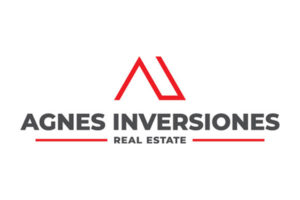Interview with Rocío Sainz de Rozas – the landscape genius behind our sustainable gardens at Vista Lago Residences.
With offices in Seville and Sotogrande RSR Landscape Designers are creating beautiful outdoor spaces throughout Spain. Not only do they design boutique private gardens and large scale projects in Sotogrande, Cádiz, Málaga, Seville and Madrid, but they also act as local partners for international landscape designers.

They are the landscape designers responsible for the communal and private gardens at Vista Lago Residences.
Sustainability and eco-friendly practices are becoming increasingly important in the landscaping business and the company have become specialists in Drought-Tolerant Plants, working with species adapted to the Mediterranean climate that have different blooms throughout the seasons and make very efficient use of water.
Rocío Sainz de Rozas, who founded the company in 2017, is a natural communicator and has an exquisite design sense.

Interview by Sophie Gatward-Wicks
Can you tell us about the journey that led you to establish your own landscaping business? What inspired you to pursue this career?
Honestly, I went from working in finance to landscaping/gardening: I studied Business Administration and Management at ICADE and after I graduated from my degree I started working in financial consulting at Deloitte, in the offices of Torre Picasso in Madrid.
I went up to the office every single day wanting to stay in Leandro Silva’s garden, found right at the feet of the tower. But one day, I never went back. This was, by far, the best decision of my life! I went on to study for a degree in Agricultural Engineering, specialising in horticulture and gardening.
After a temporary stay in England working as a gardener and expanding my knowledge, I started my life as a landscape gardener at Finca Cortesín. The next big step was creating RSR landscape studio in 2017.
You have a spectacular portfolio of projects. Could you share a specific project that you found to be particularly rewarding?
It is true that we could highlight several features in each of our gardens that make them special, unique and eye-catching. But if we were to choose one garden, this would be one we have special affection for, developed several years ago in the Sierra de Grazalema Natural Park. The setting was wonderful, with outstanding holm oaks which we mixed with native plants. The following photos will show the results:


There is this other garden we love, a garden planted many years ago in the Sierra de Aracena with different types of gardens adapted to every space. The architecture is that of a traditional farmhouse. We had a garden at the entrance to the cortijo, with a mix of grasses that change according to the season. A white garden where you can enjoy an outdoor meal under the shade of a holm oak tree. There is also a gravel garden surrounding the pool. It turns out it is working very well in spite of the heat in this south facing area during the summer.

One of our first large scale gardens, which we have great affection for, is the Beach Club at La Reserva in Sotogrande, where we worked with Scape London. It was a challenge to develop a Beach Club surrounded by Mediterranean planting but with a core full of palm trees.

Sustainability and eco-friendly practices are becoming increasingly important in the landscaping business. The collaboration with artisans in the region and the use of locally sourced materials such as the Andalusian white clay in your signature plant pots, is a great example of this. In what other ways does your business prioritize environmental responsibility in its projects?
Unfortunately, water scarcity is now a reality globally and even more so in our Mediterranean climate, so gardens with low water consumption are a trend that allows us to create beautiful and sustainable gardens. We are specialists in Drought-Tolerant Plants, working with species adapted to the Mediterranean climate that have different blooms throughout the seasons and make very efficient use of water.
The use of pine bark to maintain the humidity, reduce the amount of bad weeds and give a tidy finish to the garden while it is growing is vital and has been used for a long time in Central Europe. In Spain we are implementing it in every garden because the result is outstanding. These two practices we have discussed, the selection of species and the use of ground cover, make our gardens more sustainable.

Could you give us an overview of what you have planned for the upcoming landscaping project at Vista Lago Residences, located in Real de La Quinta. What do the residents have to look forward to?
Vista Lago project is a nice challenge for us. We are dealing with a very steep topography, with very pronounced differences in elevation to start with. Although this is a challenge, we took advantage of this resource to enhance the practicality of the garden, proposing different uses based on the areas of the villas themselves.
One of the main objectives of Vista Lago is the fulfilment of the BREEAM Certification, reaching an excellent level in sustainability and respect for the environment. In this case, we proposed an extensive selection of species, all of which are autochthonous. As a result, we will obtain gardens with plants, trees and shrubs that are 100% environmentally friendly and require minimal hydration. These are watered with recycled water from the villa itself.
Owners will be able to enjoy exclusive and personalised gardens that mirror the Mediterranean garden in a contemporary way. To sum up, we can say that Vista Lago gardens bring together innovation, design and sustainability.

What do you think is the greatest challenge of working as a landscaper?
The reality is that each project is a challenge in itself. Topography, climate, soil quality, existing plants… are some of the premises we face when designing a new garden. Adapting the design to these conditions is a challenge that limits us and at the same time motivates us to surpass these limits.
How would you describe your gardening/design style?
Our main premise and origin when starting to design is to go back to the basic concept of Genius loci, the spirit of a place, pointing out the characteristic elements, the unique qualities, not only in terms of its physical composition, but how it is perceived, determining what the place is and what it can become.
Our responsibility as garden designers is to be sensitive to these unique qualities, and to achieve the absolute integration of our gardens in the landscape, in the context where they are located.
We believe that it is essential to generate links between what we create and the surrounding context/spaces. So that the result communicates order, harmony, balance and translates into a better quality of life for the people who will be in contact with our gardens.

What are some of your favourite plants you have growing in your own garden at home?
In my house, cypresses, jasmines and climbing roses are the main plants. Nonetheless, the garden doesn’t lack autumn bulbs such as daffodils, crocuses or eremurus. The secret to this is that I spend as much time as I can in the garden with my children, Fernanda and Jacobito. My children are already wonderful gardeners. They plant bulbs with me in autumn, weed better than the professionals and even help me to trellis the climbing roses!
Who has influenced you the most in your career?
It is difficult for me to answer this question, but if I had to give you two, on an international level I would highlight Piet Oudolf for his perennial garden designs, and his naturalistic approach that has revolutionised contemporary landscapes. As for Spain, I would highlight the work of Fernando Caruncho. His ability to create powerful gardens with such a minimalist aesthetic is astonishing.

If Marbella was represented by a single flower, which flower would it be and why?
I would say that the Bougainvillea is Marbella’s quintessential flower. Always so cheerful and colourful. Who doesn’t dream about the whitewashed facades reflecting the wonderful light of the Costa del Sol, dotted with the colourful flowers that this climber offers us.




































































